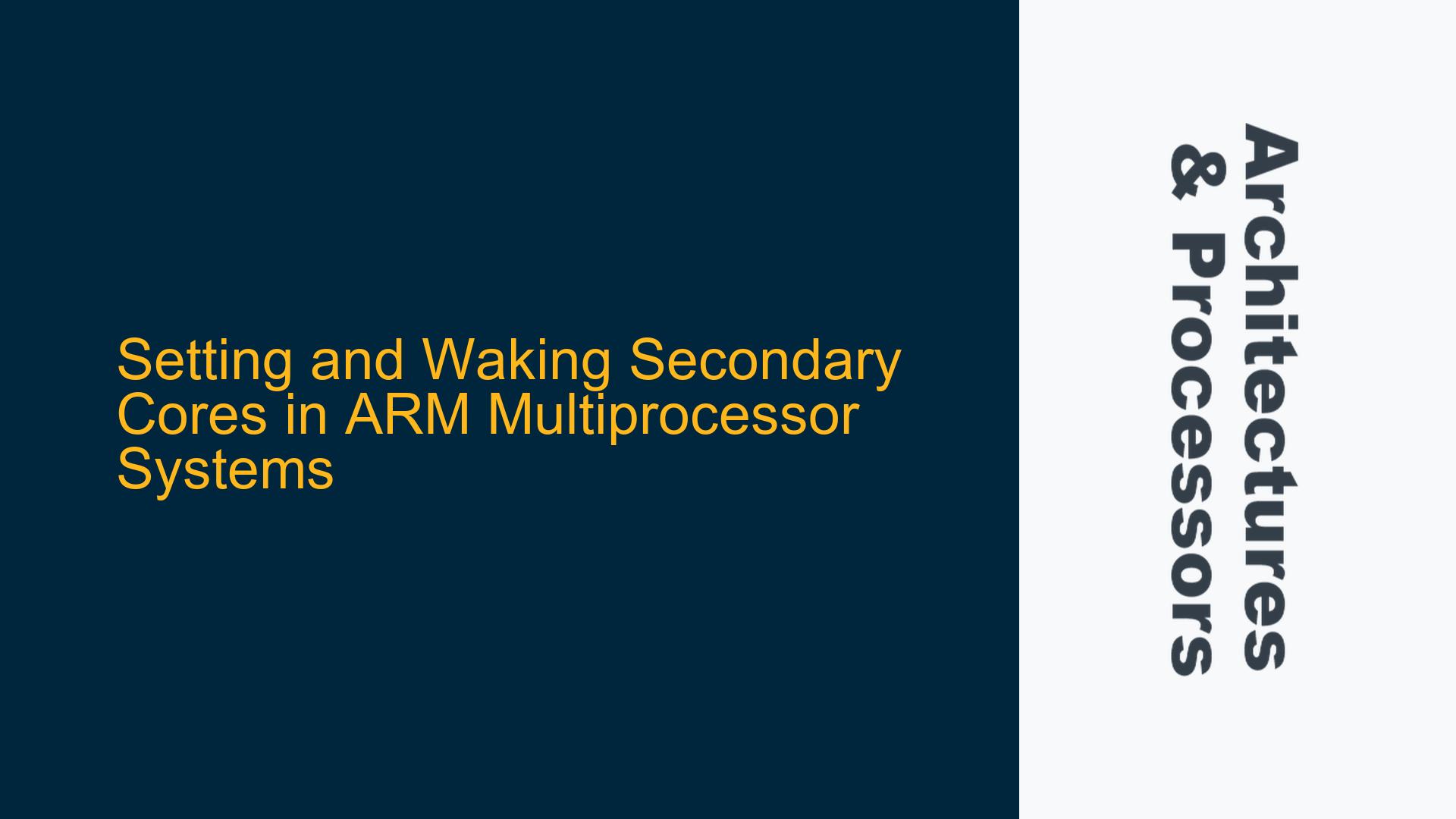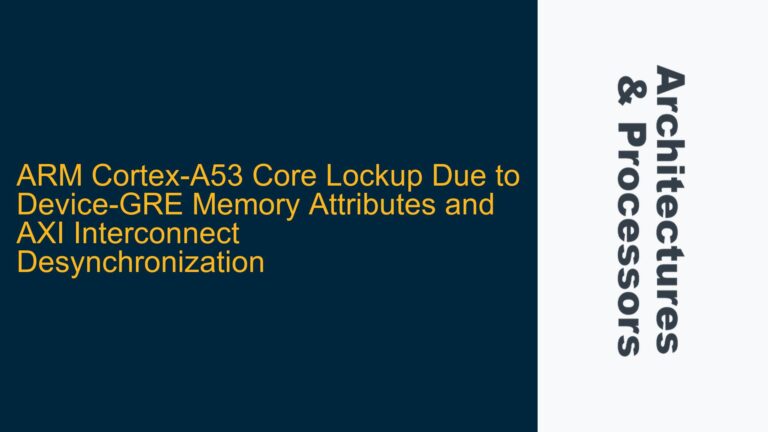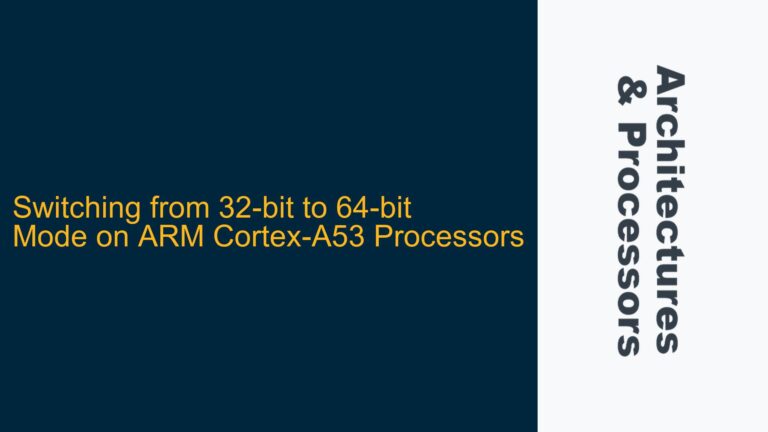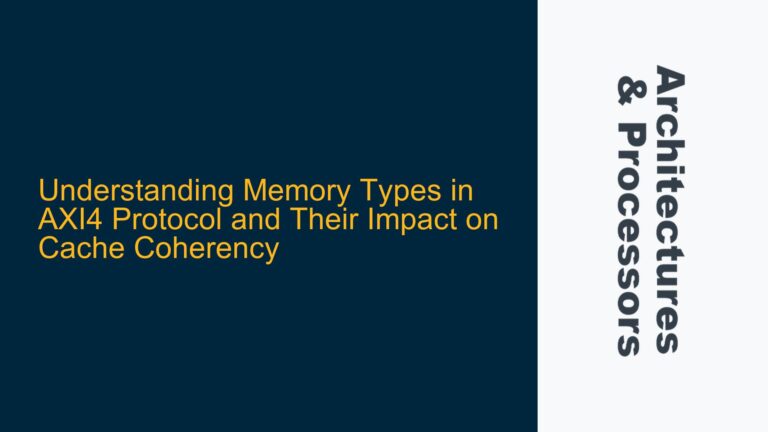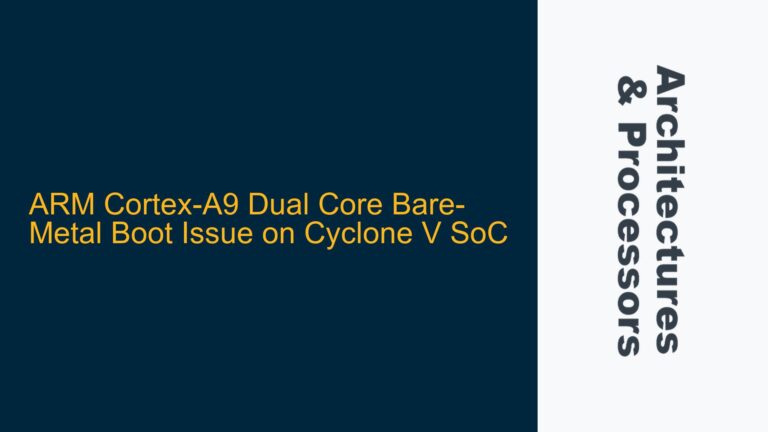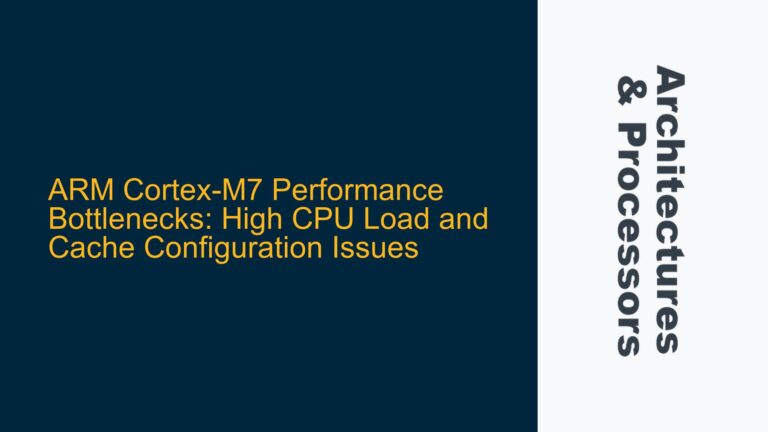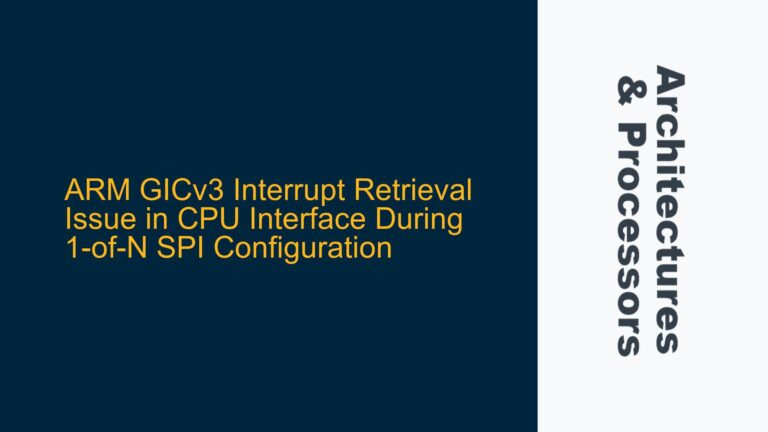ARM Cortex-A Series Secondary Core Initialization and Wake-Up Mechanisms
In ARM-based multiprocessor systems, the initialization and wake-up of secondary cores from the primary core is a critical process that involves setting the Program Counter (PC) and ensuring proper synchronization. The ARM architecture, particularly in the Cortex-A series, provides several mechanisms to achieve this, but the implementation details can vary depending on the specific System-on-Chip (SoC) and the firmware or hypervisor in use. This guide will delve into the intricacies of secondary core initialization, focusing on the ARMv8 architecture, and provide a comprehensive troubleshooting approach for common issues.
ARM Cortex-A Series Secondary Core Initialization and Wake-Up Mechanisms
The ARM Cortex-A series processors, particularly those implementing the ARMv8 architecture, support multiprocessing through the use of multiple cores. In a typical scenario, the primary core (often referred to as Core 0) is responsible for initializing the system and waking up the secondary cores. The secondary cores, upon being woken up, need to have their Program Counter (PC) set to a specific entry point where they can begin executing code.
The process of setting the PC and waking up secondary cores can be achieved through several methods, including the use of spin tables, Power State Coordination Interface (PSCI), and SoC-specific mechanisms. Each of these methods has its own set of requirements and implications, which must be carefully considered during system design and implementation.
Spin Table Mechanism
The spin table mechanism is one of the simplest methods for waking up secondary cores. In this approach, the primary core writes the entry point address (the address where the secondary core should start executing) into a predefined memory location, often referred to as the "spin table." The secondary cores, upon being woken up, continuously poll this memory location until they find a valid entry point address. Once the address is found, the secondary core jumps to that address and begins execution.
The spin table mechanism is straightforward but has some limitations. It requires that the secondary cores are in a low-power state where they can periodically wake up to check the spin table. Additionally, the spin table must be located in a memory region that is accessible to all cores, which may require careful memory mapping and cache coherency management.
Power State Coordination Interface (PSCI)
The Power State Coordination Interface (PSCI) is a standardized interface defined by ARM for power management in multiprocessor systems. PSCI provides a set of functions that can be used to control the power state of individual cores, including turning cores on and off, suspending and resuming cores, and migrating tasks between cores.
In the context of secondary core initialization, PSCI provides the CPU_ON function, which can be used to wake up a secondary core and set its PC to a specific entry point. The CPU_ON function is typically implemented in the firmware or hypervisor and is invoked by the primary core using a Secure Monitor Call (SMC) or Hypervisor Call (HVC).
The PSCI mechanism is more complex than the spin table mechanism but offers greater flexibility and control over the power state of the cores. It also abstracts the underlying hardware details, making it easier to port code between different ARM-based platforms.
SoC-Specific Mechanisms
In addition to the standardized mechanisms provided by ARM, many SoCs implement their own methods for initializing and waking up secondary cores. These methods can vary widely depending on the specific SoC and may involve writing to special registers, using dedicated hardware signals, or executing custom firmware code.
For example, some SoCs have a dedicated register that contains the start address for the secondary cores. When the primary core writes to this register, the secondary cores are woken up and begin executing code from the specified address. Other SoCs may use a combination of hardware signals and firmware to achieve the same result.
Challenges in Secondary Core Initialization and Wake-Up
Initializing and waking up secondary cores in an ARM-based multiprocessor system can be challenging due to several factors. These include the need for proper synchronization between cores, ensuring cache coherency, and handling SoC-specific quirks and limitations.
Synchronization Between Cores
One of the primary challenges in secondary core initialization is ensuring proper synchronization between the primary core and the secondary cores. The primary core must ensure that the secondary cores are properly initialized and ready to execute code before they are woken up. This often involves setting up the necessary data structures, memory mappings, and interrupt handlers before the secondary cores are started.
In the case of the spin table mechanism, the primary core must write the entry point address to the spin table before the secondary cores are woken up. If the secondary cores are woken up too early, they may read an invalid or incorrect entry point address, leading to undefined behavior.
Similarly, when using PSCI, the primary core must ensure that the CPU_ON function is called with the correct parameters and that the secondary core is properly initialized before it is woken up. Failure to do so can result in the secondary core executing incorrect or incomplete code.
Cache Coherency
Cache coherency is another critical issue in secondary core initialization. The primary core and the secondary cores may have different views of the memory system, particularly if they are using different cache levels or cache policies. This can lead to situations where the secondary cores read stale or incorrect data from memory, leading to undefined behavior.
To ensure cache coherency, the primary core must flush any necessary caches before waking up the secondary cores. This ensures that the secondary cores see a consistent view of memory when they start executing code. Additionally, the secondary cores may need to invalidate their caches upon startup to ensure that they are not using stale data.
SoC-Specific Quirks and Limitations
Finally, SoC-specific quirks and limitations can complicate the process of secondary core initialization. Some SoCs may have specific requirements for the order in which cores are initialized, or they may require certain hardware signals to be asserted before the secondary cores can be woken up. Additionally, some SoCs may have limitations on the memory regions that can be used for the spin table or other data structures.
To address these challenges, it is important to carefully review the documentation for the specific SoC being used and to consult with the SoC vendor if necessary. In some cases, it may be necessary to implement custom initialization code to handle SoC-specific requirements.
Troubleshooting Secondary Core Initialization Issues
When troubleshooting issues related to secondary core initialization and wake-up, it is important to follow a systematic approach that includes verifying the initialization sequence, checking for cache coherency issues, and ensuring that SoC-specific requirements are met.
Verifying the Initialization Sequence
The first step in troubleshooting secondary core initialization issues is to verify that the initialization sequence is being followed correctly. This includes ensuring that the primary core is properly setting up the necessary data structures, memory mappings, and interrupt handlers before waking up the secondary cores.
In the case of the spin table mechanism, the primary core must write the entry point address to the spin table before the secondary cores are woken up. If the secondary cores are woken up too early, they may read an invalid or incorrect entry point address, leading to undefined behavior. To verify that the initialization sequence is correct, it may be necessary to add debug prints or use a debugger to step through the initialization code.
When using PSCI, the primary core must ensure that the CPU_ON function is called with the correct parameters and that the secondary core is properly initialized before it is woken up. Failure to do so can result in the secondary core executing incorrect or incomplete code. To verify that the PSCI call is being made correctly, it may be necessary to check the return value of the CPU_ON function and to ensure that the secondary core is properly initialized before it is woken up.
Checking for Cache Coherency Issues
Cache coherency issues can be difficult to diagnose, as they may manifest as subtle bugs or undefined behavior. To check for cache coherency issues, it is important to ensure that the primary core is flushing any necessary caches before waking up the secondary cores. This ensures that the secondary cores see a consistent view of memory when they start executing code.
Additionally, the secondary
